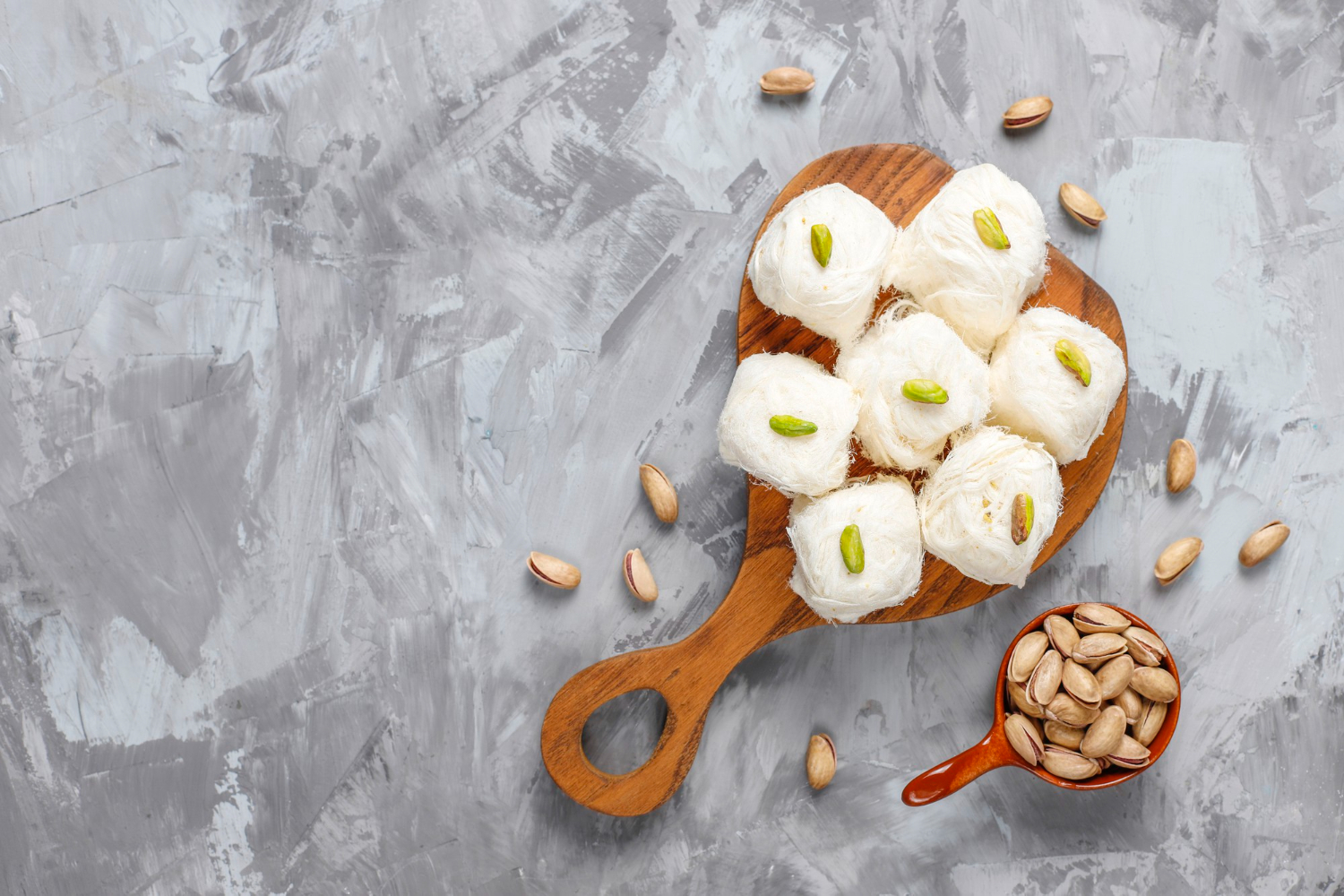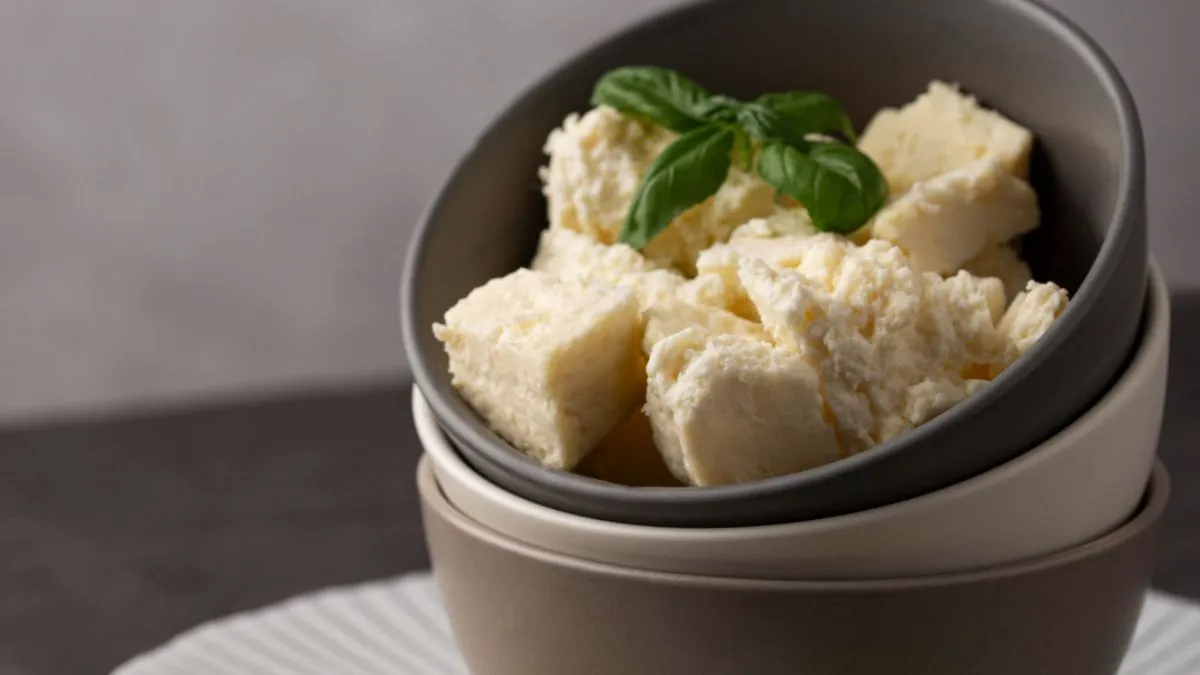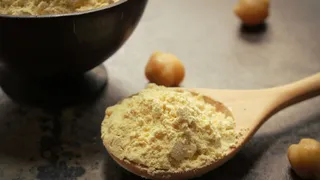- By Bornika Das
- Sun, 26 Oct 2025 12:14 PM (IST)
- Source:JND
Real vs Fake Khoya: With the ongoing festive season, the celebration feels incomplete without sweets like gujiya, peda, gulab jamun and others that are prepared in the households using khoya or mawa as the main ingredient. Khoya is loved for its rich flavour, creamy texture and adding depth to desserts. With festivities, the demand for khoya increases, which has lead to adulterated or fake versions in the market. Many retailers add things like starch, detergent or refined flour to stretch the quantity but at the cost of taste and health. Although the adulterated khoya may look similar to the real ones, they lack the authentic taste, fragrance and texture. However, with genius food hacks, people can now identify the difference between real and fake khoya instantly before buying.
Using fake khoya in recipes not only hinders the taste but also the shelf life of the festive treats. Real khoya is mostly grainy in texture and is rich and has a creamy smell, while fake khoya tends to be sticky and has a peculiar odour. Thus, to identify and understand the differences between real and fake khoya before buying, it is important to know certain food tricks.
Real vs Fake Khoya: Tricks To Identify Differences Between Them
Appearance And Texture
The texture of authentic khoya is slightly grainy, soft, and moist and has a natural off-white colour. While fake khoya has an unnatural, bright white colour and is extremely smooth because of the added chemicals or from the milk powder. If you press real khoya a little bit, it get crumbled, whereas fake khoya is hard, stretchy and sometimes overly sticky. Avoid khoya that seems shiny or like plastic, as it implies impurity or heavy use of starch and artificial whiteners.
Recommended For You
ALSO READ: 4 Simple Tips To Check If Your Mawa Is Pure Or Adulterated Ahead Of Holi 2025
Smell And Aroma
Real khoya has a fresh, milky, and slightly caramelised smell, while fake khoya has milk powder or a synthetic additive, which does not give the creamy fragrance and smell like chemicals or bland. It is important to smell khoya before buying tp distinguish between real and fake khoya. The aroma of real khoya should produce the richness of milk and a slight sweetness, which is not available in fake ones.
Taste
Authentic khoya has a creamy, slightly sweet and milky flavour and has a melt-in-mouth texture. On the other hand, fake khoya may taste bland, powdery or very sweet due to added sugar or synthetic components. Real khoya mixes smoothly into desserts, whereas fake ones may feel gritty, damp or leave a chalky aftertaste. Taste a small piece of khoya before buying to understand the difference.

Adulterated vs Real Khoya (Image Credits: Canva)
Moisture Content
Real khoya is naturally moist, which keeps it soft but firm. Fake khoya is often too dry or too wet because of added milk powder or preservatives. Real khoya holds its shape, feels flexible, and slightly bounces back when touched. Thus, it is important to check the moisture before buying, which guarantees the khoya is not adulterated nor processed with harmful chemicals. Fresh khoya lasts a few days in the refrigerator without being sticky.
Price And Source
Real khoya is prepared by boiling full-fat milk for hours on a low flame. Fake khoya is cheaper as it is prepared from milk powder, starch or synthetic chemicals. Always keep in mind to buy khoya from a trusted place, reputed sweet shops, or from local trusted vendors. If you are buying packaged khoya, check for the packaging dates and freshness.
ALSO READ: Diwali 2024: How To Identify Adulterated Khoya For Sweets? Try These 3 Simple Ways At Home
Following these food hacks and tricks helps to identify the differences between real and fake khoya. These help to make use of real khoya to add flavour and richness to the desserts and sweets during the festive days and prevent falling prey to adulterated khoya.





